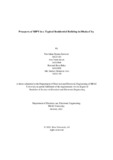| dc.contributor.advisor | Rahman, Md. Mosaddequr | |
| dc.contributor.author | Sorower, Nur Jahan Beanta | |
| dc.contributor.author | Seum, Abu Niem | |
| dc.contributor.author | Raka, Rawnak Reza | |
| dc.contributor.author | Alvi, Md. Shifain Mahathir | |
| dc.date.accessioned | 2022-02-15T06:00:56Z | |
| dc.date.available | 2022-02-15T06:00:56Z | |
| dc.date.copyright | 2021 | |
| dc.date.issued | 2021-10 | |
| dc.identifier.other | ID 16121163 | |
| dc.identifier.other | ID 16321008 | |
| dc.identifier.other | ID 16321058 | |
| dc.identifier.other | ID 16321158 | |
| dc.identifier.uri | http://hdl.handle.net/10361/16248 | |
| dc.description | This thesis is submitted in partial fulfillment of the requirements for the degree of Bachelor of Science in Electrical and Electronic Engineering, 2021. | en_US |
| dc.description | Cataloged from PDF version of thesis. | |
| dc.description | Includes bibliographical references (pages 74-78). | |
| dc.description.abstract | Building Integrated Photovoltaic System (BIPV) is the incorporation of Photovoltaic (PV) into the structure envelope in the top, the exteriors or potentially might be utilized for the structure. In this work on BIPV system simulated in a residential building, authors look forward to comparing energy consumption and exploring a considerable amount of possible and potential factors that would conclude with a significant contribution. It is seen that, the world is consistently fighting against climate change and the increasing demand as well as the rising prices of fossil energy products globally draws our attention to the Renewable Energy Sources (RES) of the earth. The earth provides us with so many RES, among them solar is the most effective , accessible and relatively cheaper- more sustainable than the existing others. Lately, BIPV (Building Integrated Photovoltaic System) is arising as an expected area for buyers just as altruists. According to the viewpoint of Bangladesh, BIPV is moderately inexistent and the people entitled under this work decide to evaluate the energy consumption of a specific aspect as well as the energy evaluation of the solar in terms of the electrical energy. After doing energy assessment, it has been looked for whether the simulated BIPV energy is adequate for the load demand or whether it is sufficient enough to be given to the national grid. Finally, some financial and environmental aspect has been assessed for non-technical advantage and scopes of the BIPV system. The result shows that, for seven months, the system can not only meet up the load, it can be grid independent and it can provide power to the grid. On the other hand, for the rest five months, the building needs to be dependent on grid. | en_US |
| dc.description.statementofresponsibility | Nur Jahan Beanta Sorower | |
| dc.description.statementofresponsibility | Abu Niem Seum | |
| dc.description.statementofresponsibility | Rawnak Reza Raka | |
| dc.description.statementofresponsibility | Md. Shifain Mahathir Alvi | |
| dc.format.extent | 78 pages | |
| dc.language.iso | en | en_US |
| dc.publisher | Brac University | en_US |
| dc.rights | Brac University theses are protected by copyright. They may be viewed from this source for any purpose, but reproduction or distribution in any format is prohibited without written permission. | |
| dc.subject | BIPV | en_US |
| dc.subject | Solar irradiance | en_US |
| dc.subject | Incident energy | en_US |
| dc.subject | Grid dependency | en_US |
| dc.subject | Carbon emission | en_US |
| dc.subject | Payback | en_US |
| dc.subject.lcsh | Photovoltaic power systems | |
| dc.subject.lcsh | Building-integrated photovoltaic systems | |
| dc.title | Prospects of BIPV in a typical residential building in Dhaka city | en_US |
| dc.type | Thesis | en_US |
| dc.contributor.department | Department of Electrical and Electronic Engineering, Brac University | |
| dc.description.degree | B. Electrical and Electronic Engineering | |

